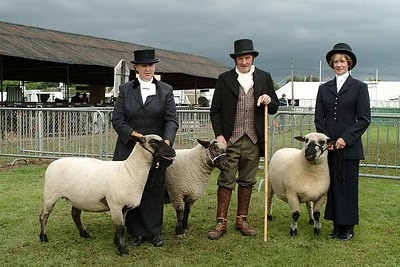- Economic growth and biodiversity. “There is no fundamental conflict between economic growth and biodiversity.” Hmmmmn.
- Phytodiversity of temperate permanent grasslands: ecosystem services for agriculture and livestock management for diversity conservation. At heart, a plea for more interdisciplinary research.
- The Interaction between Seaweed Farming as an Alternative Occupation and Fisher Numbers in the Central Philippines. Alternative occupations don’t necessarily reduce over-harvesting.
- Genotyping of pedigreed apple breeding material with a genome-covering set of SSRs: trueness-to-type of cultivars and their parentages. Your papa aint your papa but your papa don’t know.
- The GCP molecular marker toolkit, an instrument for use in breeding food security crops. Marker-assisted selection is not yet used for Musa spp., coconut, lentils, millets, pigeonpea, sweet potato, and yam. For the other 12 crops, 214 molecular markers were found to be effectively used in association with 74 different traits.
- Ant diversity and bio-indicators in land management of lac insect agroecosystem in Southwestern China. When you’re managing for a wild insect, the wild species are secondary.
- Biofortification for combating ‘hidden hunger’ for iron. Swings and roundabouts apply, with a vengeance.
How endangered are Shropshire sheep?

You may have seen stories in the past week or so of a flock of Shropshire sheep that authorities in Canada have threatened with destruction. The sheep belong to Montana Jones, who raises them at her Wholearth Farm, near Hastings in Peterborough. Five years ago she sold a ewe to a farmer in Alberta, and that sheep has been diagnosed with scrapie. As a result, the Canadian Food Inspection Agency wants to destroy other animals from the same flock who are infected or suspected of being infected.
One problem for Montana Jones is that the test “is only about 85% accurate”. So the sheep that tested positive may not have scrapie, although I have no idea what that 85% figure actually means. False positives? False negatives? What?
It is a long time since I last had to get my ahead around scrapie, the risks to humans (it is not “mad sheep disease”), the different breed susceptibilities, and the different approaches to eradication. All of those are important issues, I am sure. What concerns me about Montana Jones’ case is whether the appeal to the rarity of Shropshire sheep justifies not taking the precaution of slaughtering some of the flock.
Of course it is heart-breaking to lose animals you have lavished care on, especially when you feel that the action is not justified. But while Shropshires may be very rare in Canada, with all kinds of historical attachments, they are in pretty reasonable shape elsewhere, for example at their home in the UK. (Here is a wool nut’s view of the UK Rare Breeds Survival Trust’s rankings.) I wonder, too, how much genetic diversity the Canadian flocks represent. Wouldn’t it be cool if someone were able to genemap all the Shropshires around the world, in order to be able to show the CFIA just what we would be losing if they go ahead with their plan to cull half of Montana Jones’ flock?
By all means go ahead and sign the petition to save those Shropshires, but consider, too, that evidence of their genetic importance might just carry more weight.
Funding for agrobiodiversity: problem solved
If everyone who depends on a plant-based diet were to contribute just one cent a year to the conservation of agricultural biodiversity, the result would be a fund of $70 million a year. That would conserve an awful lot of agrobiodiversity.
This revolutionary idea is not, I confess, entirely original. It sprang, more or less fully formed, shortly after I read Entertainment Value: Should the Media Pay for Nature Conservation? by Paul Jepson, of Oxford University, and his colleagues, in today’s Science.
Jepson et al. point out that broadcasters make a bunch of money by showing us the wonders of nature and yet they contribute little to its conservation. By the same token, I reckon that people who eat make little contribution to the conservation of the agricultural biodiversity on which their food security, now and in the future, depends.
The devil is in the details, I know, and Jepson et al. have some nifty discussion of those details as they would apply to broadcasters. But think about it. One cent a year. Even if you’re on less than a dollar a day, that ought to be affordable.
Nibbles: Journalism, Conservation, IPRs in Uganda
- The Wall Street Journal tries to get its head around genebanks, climate change and plant breeding, with mixed success.
- Farming essential to threatened wildlife. Now there’s a turnup for the books.
- A Ugandan wants intellectual property laws for agricultural development. I think share and share alike would be good too.
Nibbles: Evergreen Agriculture, Traditional Knowledge
- Blogposts from Durban I: Evergreen Agriculture for all
- Blogposts from Durban II: Meteorologists, traditional and modern.
- And the quote of the day, yesterday: “There is no word in English for the Irish word that translates, roughly, as ubuntu.”